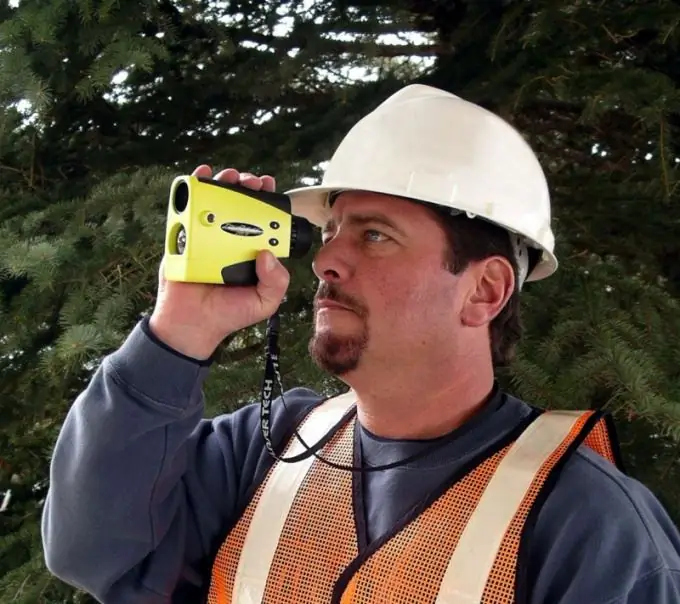Recently, laser rangefinders are increasingly replacing conventional tape measures when measuring distances. They do not require the involvement of assistants, save time, and provide high accuracy of readings. Ample opportunities for choice make it somewhat difficult to acquire the desired model, but knowing some of the nuances and features, you will buy what you need and not overpay.

Instructions
Step 1
The basis for the choice is the ratio of the parameters of functionality / cost of the device. The preponderance in this ratio towards one or the other parameter is determined by the scope of the rangefinder application - professional or household. The functionality of each model is determined by the dimensions of the measured distances, reliability, accuracy and service. To more accurately choose the right model, determine the range of problems for which it is purchased.
Step 2
First of all, pay attention to the range of the determined distances. The best models measure at distances of up to 200 m. But if the device is necessary for domestic use, a range of 30-50 m is enough. In addition, measuring distances over 50 m requires the use of additional equipment - a tripod and a reflective lens, to work with which not all models fit.
Step 3
Then determine the required degree of accuracy. As a rule, the most accurate models have a measurement tolerance of 1 mm. But in most cases, an accuracy of 5 mm is sufficient. And this accuracy is provided by most rangefinders - their accuracy is 1.5-2 mm.
Step 4
Understand additional features. Among them are often the calculation of areas and volumes, measurement memory, addition and subtraction. With the help of additional equipment, you can carry out optical or digital sighting, leveling, data transmission via Bluetooth, measuring slopes. The presence of such functions increases the cost of the design, but does not always find its application in activities.
Step 5
After preliminary determination and selection of the model you are interested in, find out in detail about the warranty and service. This is especially important if the cost of the purchased device is quite high. Household rangefinders often have a warranty of 1-2 years, professional ones - up to 2-3 years. It is also important that there is at least one service center in your city that carries out warranty and post-warranty repairs of the selected model.
Step 6
Correlate your financial capabilities with the price of the selected rangefinder. If the model is too expensive for you, a cheaper model may be suitable. The cost of professional models cannot be low, since the quality of their manufacture is much higher. In addition, such devices must be certified by the State Register of Measuring Instruments. For home use, buy a not very expensive model designed for home use.







